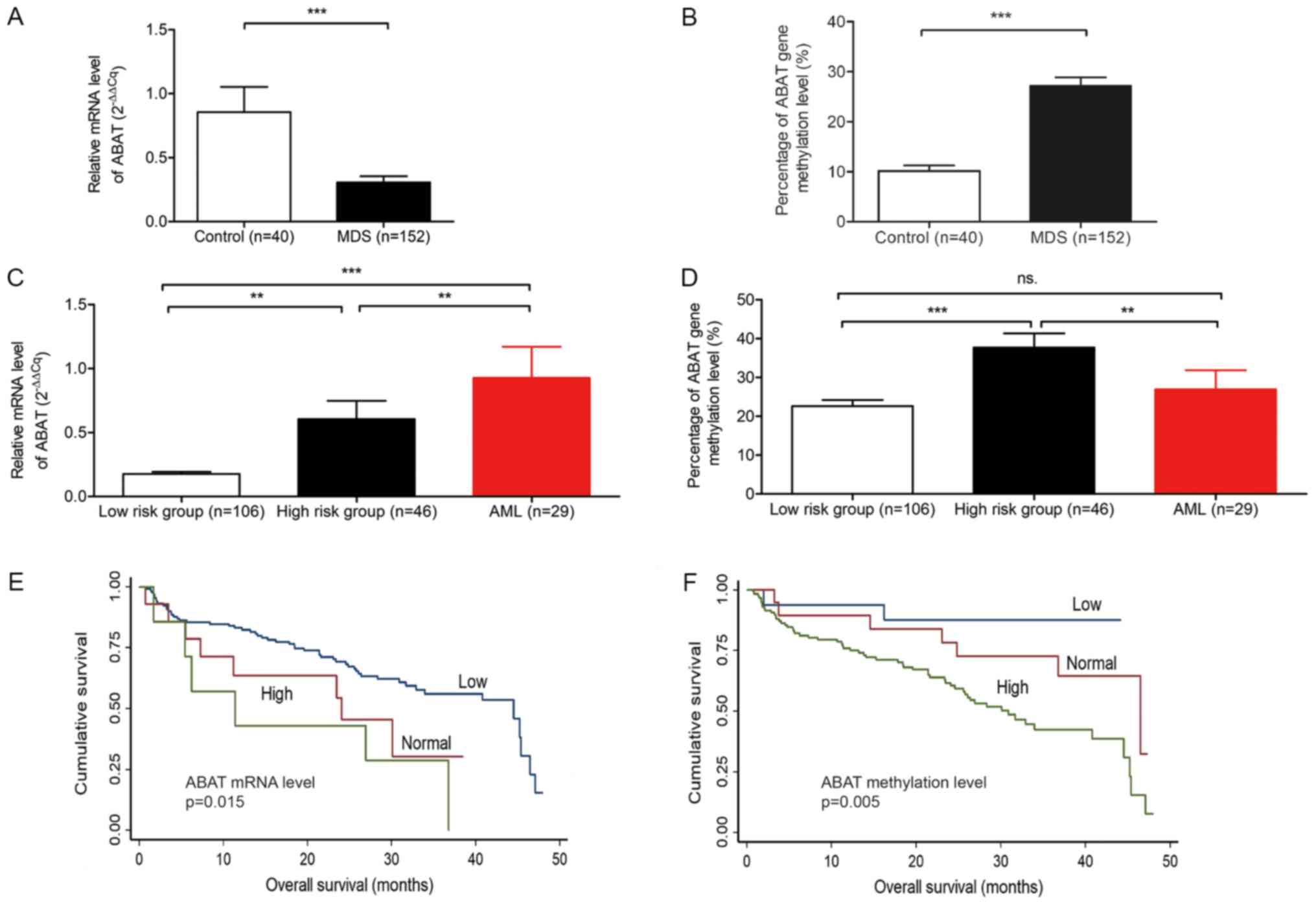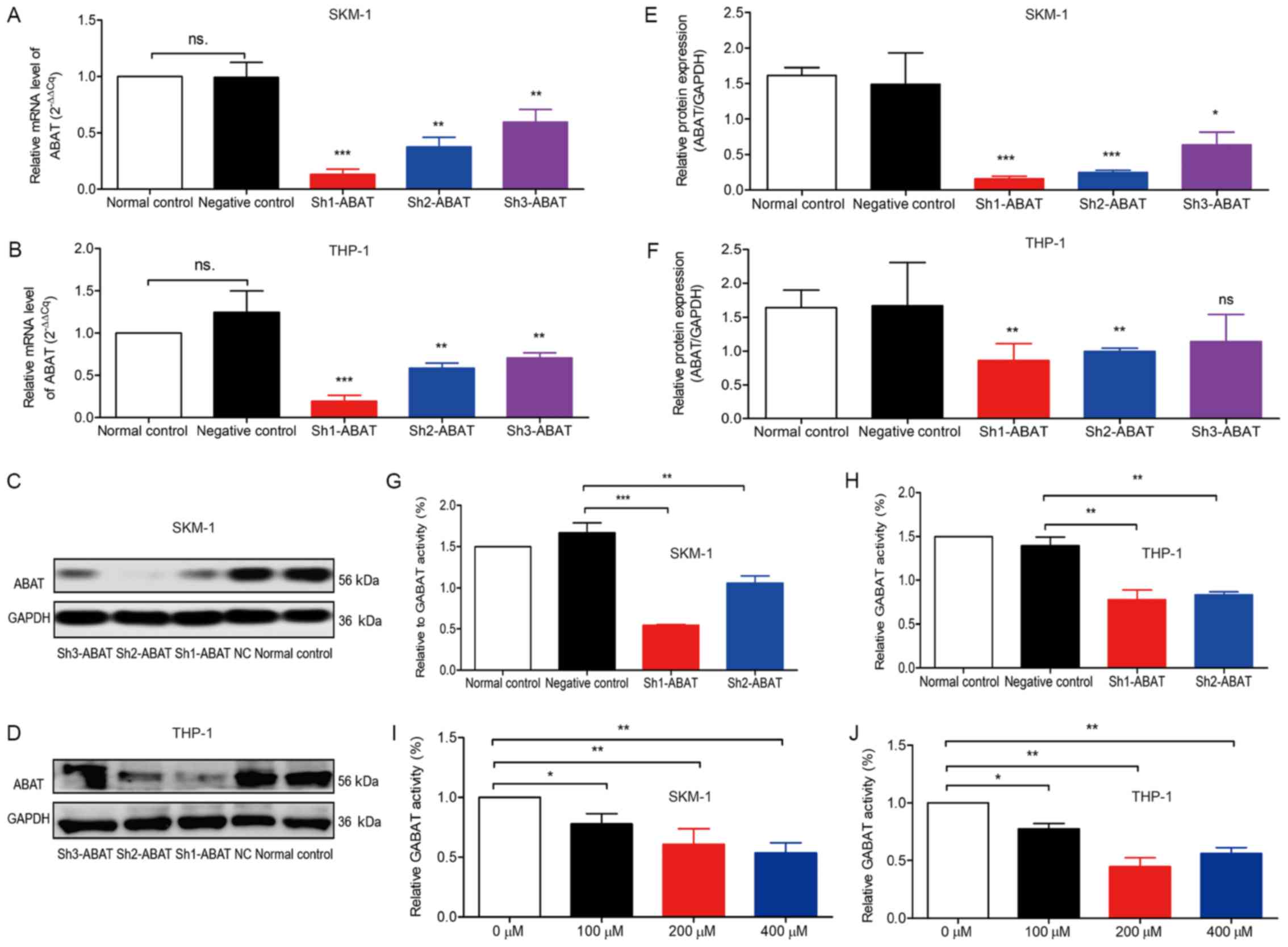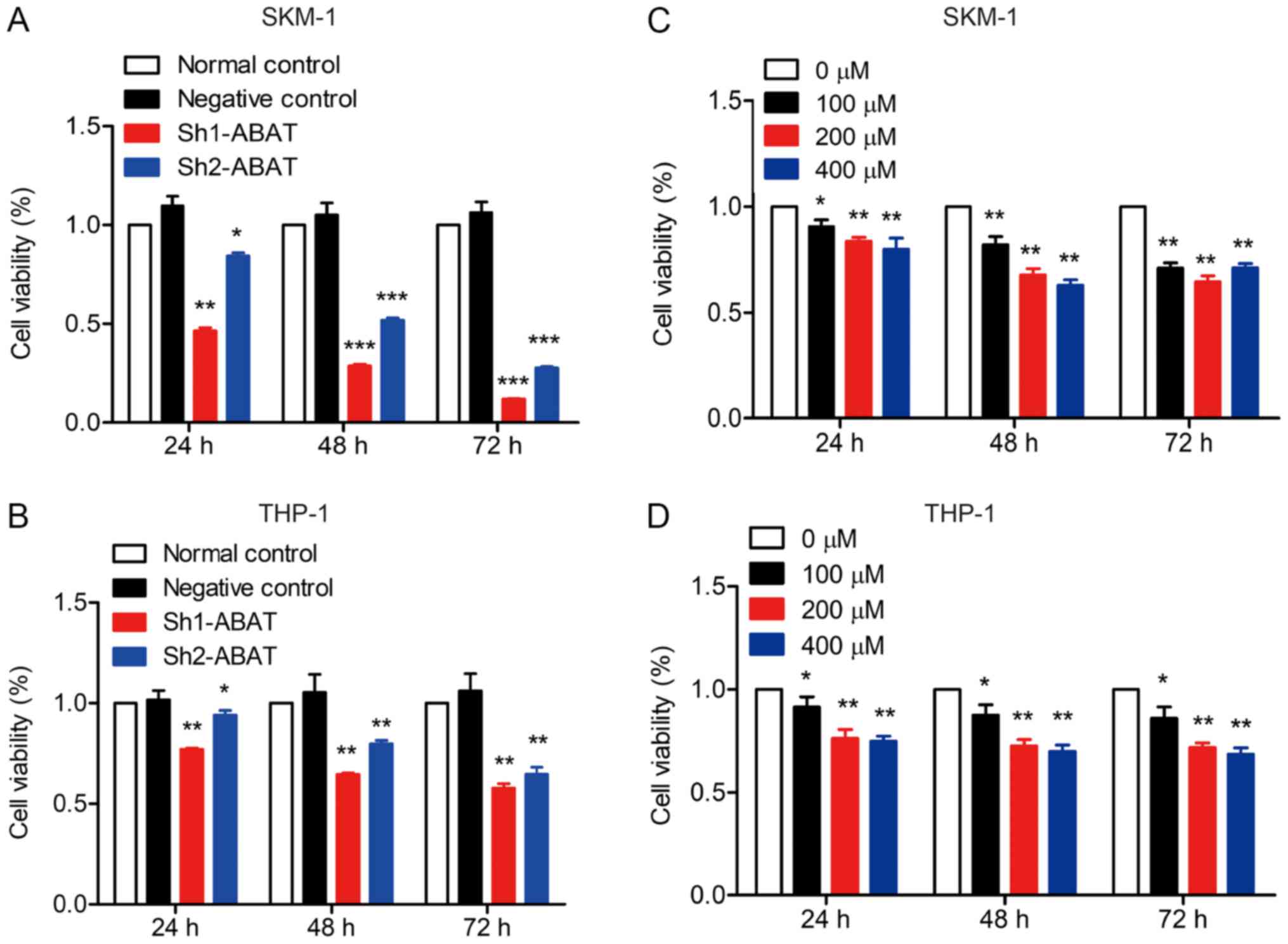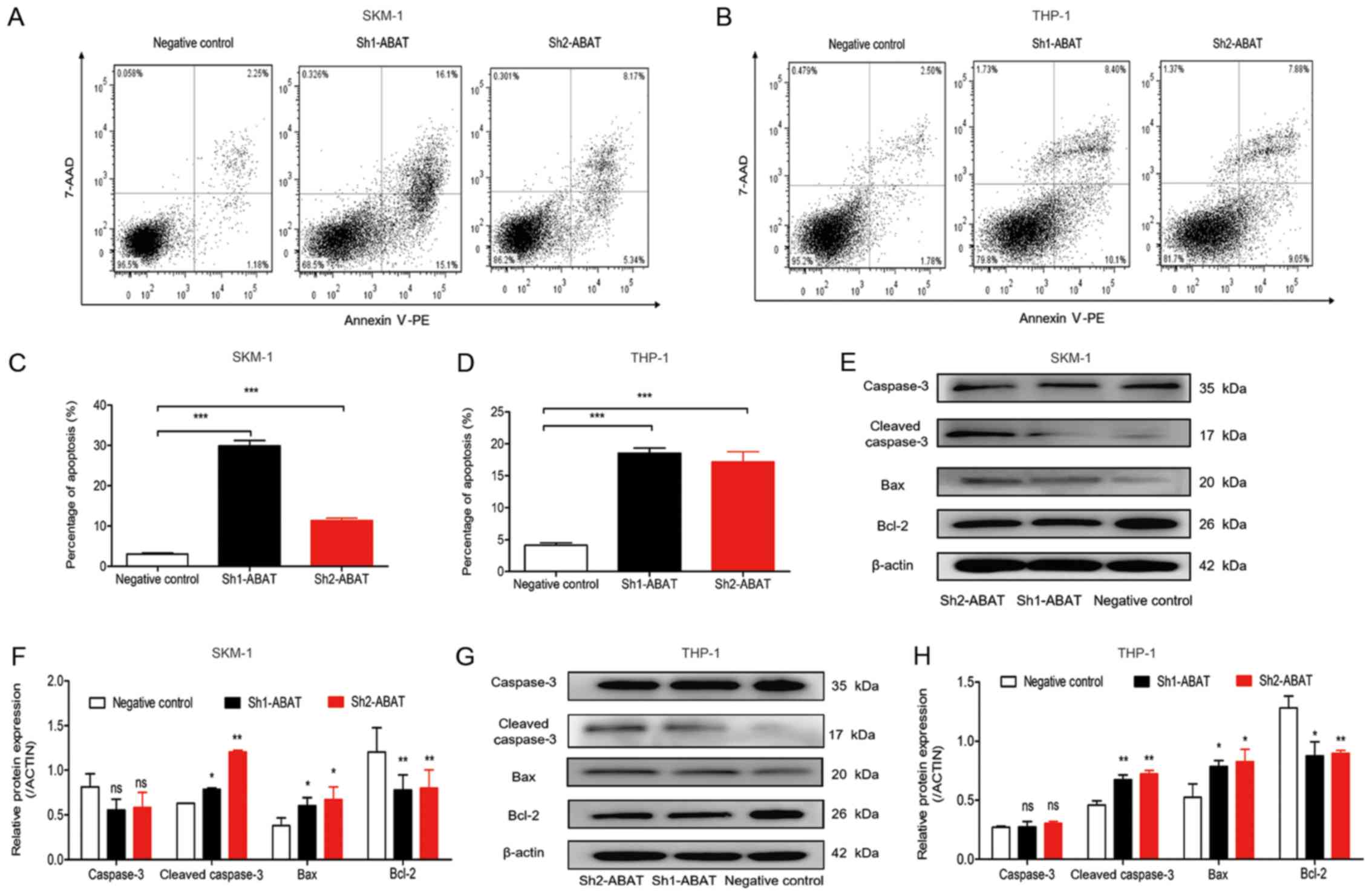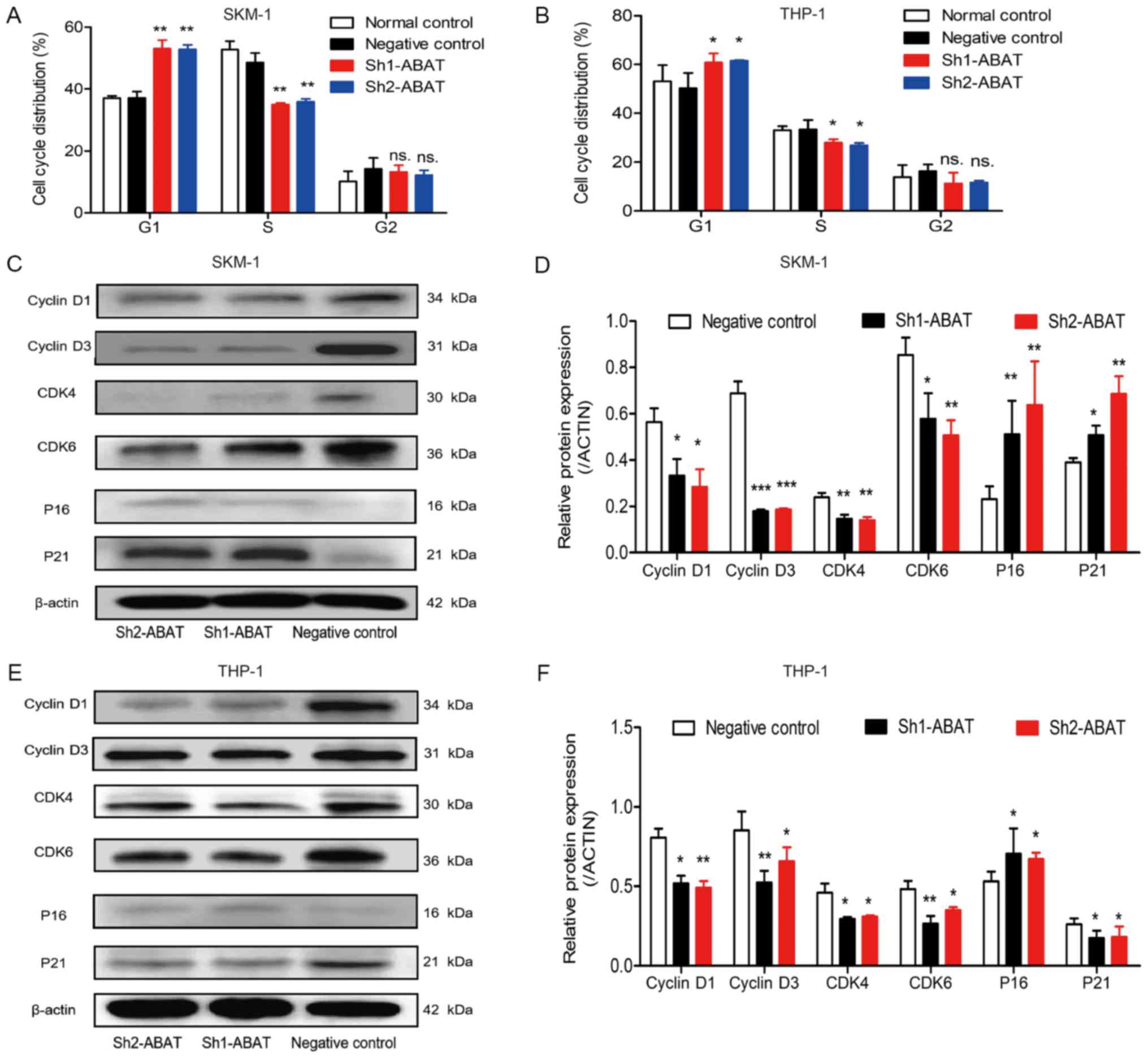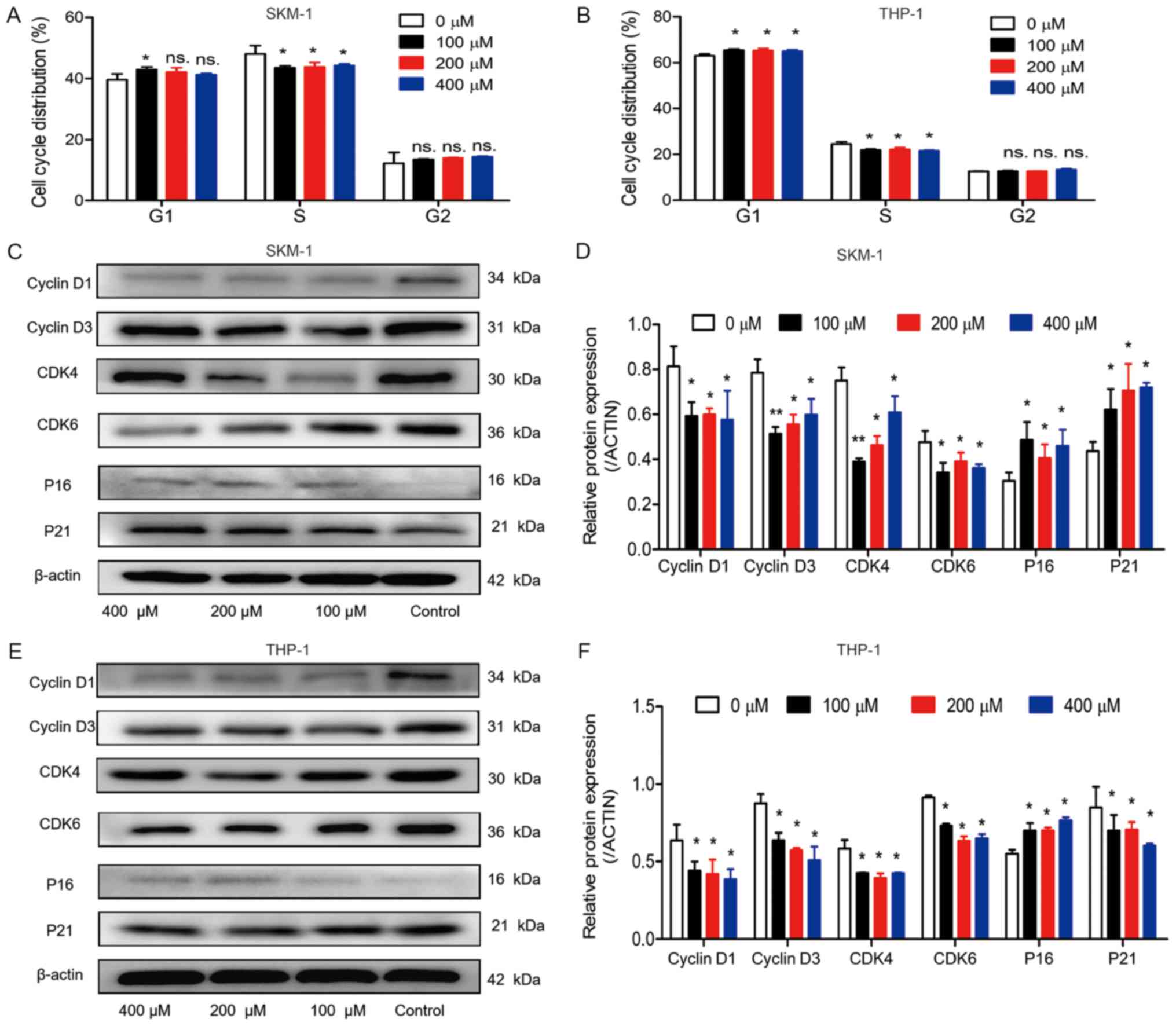|
1
|
del Rey M, O’Hagan K, Dellett M, Aibar S,
Colyer HA, Alonso ME, Díez-Campelo M, Armstrong RN, Sharpe DJ,
Gutiérrez NC, et al: Genome-wide profiling of methylation
identifies novel targets with aberrant hypermethylation and reduced
expression in low-risk myelodysplastic syndromes. Leukemia.
27:610–618. 2013. View Article : Google Scholar
|
|
2
|
Leone G, Voso MT, Teofili L and Lübbert M:
Inhibitors of DNA methylation in the treatment of hematological
malignancies and MDS. Clin Immunol. 109:89–102. 2003. View Article : Google Scholar
|
|
3
|
Khan H, Vale C, Bhagat T and Verma A: Role
of DNA methylation in the pathogenesis and treatment of
myelodysplastic syndromes. Semin Hematol. 50:16–37. 2013.
View Article : Google Scholar
|
|
4
|
Zhao X, Yang F, Li S, Liu M, Ying S, Jia X
and Wang X: CpG island methylator phenotype of myelodysplastic
syndrome identified through genome-wide profiling of DNA
methylation and gene expression. Br J Haematol. 165:649–658. 2014.
View Article : Google Scholar
|
|
5
|
Dexheimer GM, Alves J, Reckziegel L,
Lazzaretti G and Abujamra AL: DNA methylation events as markers for
diagnosis and management of acute myeloid leukemia and
myelodysplastic syndrome. Dis Markers. 2017.5472893:2017.
|
|
6
|
Li N, Chen Q, Gu J, Li S, Zhao G, Wang W,
Wang Z and Wang X: Synergistic inhibitory effects of deferasirox in
combination with decitabine on leukemia cell lines SKM-1, THP-1,
and K-562. Oncotarget. 8:36517–36530. 2017.
|
|
7
|
Schwab C, Yu S, Wong W, McGeer EG and
McGeer PL: GAD65, GAD67, and GABAT immunostaining in human brain
and apparent GAD65 loss in Alzheimer’s disease. J Alzheimers Dis.
33:1073–1088. 2013. View Article : Google Scholar
|
|
8
|
Besse A, Wu P, Bruni F, Donti T, Graham
BH, Craigen WJ, McFarland R, Moretti P, Lalani S, Scott KL, et al:
The GABA transaminase, ABAT, is essential for mitochondrial
nucleoside metabolism. Cell Metab. 21:417–427. 2015. View Article : Google Scholar
|
|
9
|
Budczies J, Brockmöller SF, Müller BM,
Barupal DK, Richter-Ehrenstein C, Kleine-Tebbe A, Griffin JL,
Orešič M, Dietel M, Denkert C, et al: Comparative metabolomics of
estrogen receptor positive and estrogen receptor negative breast
cancer: Alterations in glutamine and beta-alanine metabolism. J
Proteomics. 94:279–288. 2013. View Article : Google Scholar
|
|
10
|
Jansen MP, Sas L, Sieuwerts AM, Van
Cauwenberghe C, Ramirez-Ardila D, Look M, Ruigrok-Ritstier K,
Finetti P, Bertucci F, Timmermans MM, et al: Decreased expression
of ABAT and STC2 hallmarks ER-positive inflammatory breast cancer
and endocrine therapy resistance in advanced disease. Mol Oncol.
9:1218–1233. 2015. View Article : Google Scholar : PubMed/NCBI
|
|
11
|
Chen P, Wang F, Feng J, Zhou R, Chang Y,
Liu J and Zhao Q: Co-expression network analysis identified six hub
genes in association with metastasis risk and prognosis in
hepatocellular carcinoma. Oncotarget. 8:48948–48958. 2017.
|
|
12
|
Bennett JM: World Health Organization
classification of the acute leukemias and myelodysplastic syndrome.
Int J Hematol. 72:131–133. 2000.
|
|
13
|
Greenberg P, Cox C, LeBeau MM, Fenaux P,
Morel P, Sanz G, Sanz M, Vallespi T, Hamblin T, Oscier D, et al:
International scoring system for evaluating prognosis in
myelodysplastic syndromes. Blood. 89:2079–2088. 1997.
|
|
14
|
Livak KJ and Schmittgen TD: Analysis of
relative gene expression data using real-time quantitative PCR and
the 2(−Delta Delta C(T)) method. Methods. 25:402–408. 2001.
View Article : Google Scholar
|
|
15
|
Besse A, Petersen AK, Hunter JV, Appadurai
V, Lalani SR and Bonnen PE: Personalized medicine approach confirms
a milder case of ABAT deficiency. Mol Brain. 9:932016. View Article : Google Scholar
|
|
16
|
Lin J, Yao DM, Qian J, Wang YL, Han LX,
Jiang YW, Fei X, Cen JN and Chen ZX: Methylation status of fragile
histidine triad (FHIT) gene and its clinical impact on prognosis of
patients with myelodysplastic syndrome. Leuk Res. 32:1541–1545.
2008. View Article : Google Scholar : PubMed/NCBI
|
|
17
|
Iwai M, Kiyoi H, Ozeki K, Kinoshita T, Emi
N, Ohno R and Naoe T: Expression and methylation status of the FHIT
gene in acute myeloid leukemia and myelodysplastic syndrome.
Leukemia. 19:1367–1375. 2005. View Article : Google Scholar
|
|
18
|
Wang H, Wang XQ, Xu XP and Lin GW: ID4
methylation predicts high risk of leukemic transformation in
patients with myelodysplastic syndrome. Leuk Res. 34:598–604. 2010.
View Article : Google Scholar
|
|
19
|
Wu SJ, Yao M, Chou WC, Tang JL, Chen CY,
Ko BS, Huang SY, Tsay W, Chen YC, Shen MC, et al: Clinical
implications of SOCS1 methylation in myelodysplastic syndrome. Br J
Haematol. 135:317–323. 2006. View Article : Google Scholar
|
|
20
|
Zhou JD, Lin J, Zhang TJ, Ma JC, Yang L,
Wen XM, Guo H, Yang J, Deng ZQ and Qian J: GPX3 methylation in bone
marrow predicts adverse prognosis and leukemia transformation in
myelodysplastic syndrome. Cancer Med. 6:267–274. 2017. View Article : Google Scholar
|
|
21
|
Calvo X, Nomdedeu M, Navarro A, Tejero R,
Costa D, Muñoz C, Pereira A, Peña O, Risueño RM, Monzó M, et al:
High levels of global DNA methylation are an independent adverse
prognostic factor in a series of 90 patients with de novo
myelodysplastic syndrome. Leuk Res. 38:874–881. 2014. View Article : Google Scholar
|
|
22
|
Tien HF, Tang JH, Tsay W, Liu MC, Lee FY,
Wang CH, Chen YC and Shen MC: Methylation of the p15(INK4B) gene in
myelodysplastic syndrome: It can be detected early at diagnosis or
during disease progression and is highly associated with leukaemic
transformation. Br J Haematol. 112:148–154. 2001. View Article : Google Scholar
|
|
23
|
Dan C, Chi J and Wang L: Molecular
mechanisms of the progression of myelodysplastic syndrome to
secondary acute myeloid leukaemia and implication for therapy. Ann
Med. 47:209–217. 2015. View Article : Google Scholar : PubMed/NCBI
|
|
24
|
Woods BA and Levine RL: The role of
mutations in epigenetic regulators in myeloid malignancies. Immunol
Rev. 263:22–35. 2015. View Article : Google Scholar
|
|
25
|
Ben-Menachem E: Mechanism of action of
vigabatrin: Correcting misperceptions. Acta Neurol Scand Suppl.
192:5–15. 2011. View Article : Google Scholar
|
|
26
|
Maguire SE, Rhoades S, Chen WF, Sengupta
A, Yue Z, Lim JC, Mitchell CH, Weljie AM and Sehgal A: Independent
effects of gamma-Aminobutyric acid transaminase (GABAT) on
metabolic and sleep homeostasis. J Biol Chem. 290:20407–20416.
2015. View Article : Google Scholar
|
|
27
|
DiNardo CD, Jabbour E, Ravandi F,
Takahashi K, Daver N, Routbort M, Patel KP, Brandt M, Pierce S,
Kantarjian H, et al: IDH1 and IDH2 mutations in myelodysplastic
syndromes and role in disease progression. Leukemia. 30:980–984.
2016. View Article : Google Scholar :
|
|
28
|
Louro P, Ramos L, Robalo C, Cancelinha C,
Dinis A, Veiga R, Pina R, Rebelo O, Pop A, Diogo L, et al:
Phenotyping GABA transaminase deficiency: A case description and
literature review. J Inherit Metab Dis. 39:743–747. 2016.
View Article : Google Scholar
|
|
29
|
Barnby G, Abbott A, Sykes N, Morris A,
Weeks DE, Mott R, Lamb J, Bailey AJ and Monaco AP; International
Molecular Genetics Study of Autism Consortium: Candidate-gene
screening and association analysis at the autism-susceptibility
locus on chromosome 16p: Evidence of association at GRIN2A and
ABAT. Am J Hum Genet. 76:950–966. 2005. View Article : Google Scholar
|
|
30
|
Jirholt J, Asling B, Hammond P, Davidson
G, Knutsson M, Walentinsson A, Jensen JM, Lehmann A, Agreus L and
Lagerström-Fermer M: 4-aminobutyrate aminotransferase (ABAT):
Genetic and pharmacological evidence for an involvement in gastro
esophageal reflux disease. PLoS One. 6:e190952011. View Article : Google Scholar
|
|
31
|
Wegerer M, Adena S, Pfennig A, Czamara D,
Sailer U, Bettecken T, Müller-Myhsok B, Modell S and Ising M:
Variants within the GABA transaminase (ABAT) gene region are
associated with somatosensory evoked EEG potentials in families at
high risk for affective disorders. Psychol Med. 43:1207–1217. 2013.
View Article : Google Scholar
|
|
32
|
Musialik E, Bujko M, Kober P, Grygorowicz
MA, Libura M, Przestrzelska M, Juszczyński P, Borg K, Florek I,
Jakóbczyk M, et al: Comparison of promoter DNA methylation and
expression levels of genes encoding CCAAT/enhancer binding proteins
in AML patients. Leuk Res. 38:850–856. 2014. View Article : Google Scholar
|
|
33
|
Bert SA, Robinson MD, Strbenac D, Statham
AL, Song JZ, Hulf T, Sutherland RL, Coolen MW, Stirzaker C and
Clark SJ: Regional activation of the cancer genome by long-range
epigenetic remodeling. Cancer Cell. 23:9–22. 2013. View Article : Google Scholar
|
|
34
|
Lee SM, Choi WY, Lee J and Kim YJ: The
regulatory mechanisms of intragenic DNA methylation. Epigenomics.
7:527–531. 2015. View Article : Google Scholar : PubMed/NCBI
|
|
35
|
Bergman Y and Cedar H: DNA methylation
dynamics in health and disease. Nat Struct Mol Biol. 20:274–281.
2013. View Article : Google Scholar
|
|
36
|
Ouzounoglou E, Dionysiou D and Stamatakos
GS: Differentiation resistance through altered retinoblastoma
protein function in acute lymphoblastic leukemia: In silico
modeling of the deregulations in the G1/S restriction point
pathway. BMC Syst Biol. 10:232016. View Article : Google Scholar
|
|
37
|
Besson A, Dowdy SF and Roberts JM: CDK
inhibitors: Cell cycle regulators and beyond. Dev Cell. 14:159–169.
2008. View Article : Google Scholar
|
|
38
|
Bonelli P, Tuccillo FM, Borrelli A,
Schiattarella A and Buonaguro FM: CDK/CCN and CDKI alterations for
cancer prognosis and therapeutic predictivity. BioMed Res Int.
2014.361020:2014.
|
|
39
|
Davies C, Hogarth LA, Dietrich PA,
Bachmann PS, Mackenzie KL, Hall AG and Lock RB: p53-independent
epigenetic repression of the p21(WAF1) gene in T-cell acute
lymphoblastic leukemia. J Biol Chem. 286:37639–37650. 2011.
View Article : Google Scholar :
|















